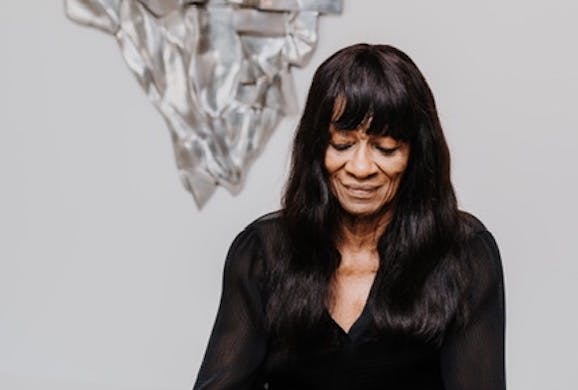Barbara Chase-Riboud Did, Indeed, Always Know
Her letters have a remarkable openness, a sort of friendly affect that is irresistible. If she ever offended anyone, she provides no evidence of doing so.

‘I Always Knew: A Memoir’
By Barbara Chase-Riboud
Princeton University Press, 480 pages
Although subtitled a memoir, this book defies categories. Because so much of it is the author’s letters to her mother, with interspersed commentary on events that did not make it into the correspondence, it is not strictly a memoir. The author is like that other famous writer of letters to the woman who raised her, Sylvia Plath, in that Ms. Chase-Riboud did not preserve her mother’s side of the story.
Also like Plath, Ms. Chase-Riboud was a summer intern/guest editor at Mademoiselle magazine, but this is where the comparison ends. New York undid Plath, and less than two months after leaving she attempted to end her life. Ms. Chase-Riboud’s time at Mademoiselle gets no more than a few sentences in the rapid ascent of the artist-poet-novelist, yet knowing the backstory to this memoir/biography/letters mixture seems crucial.
You might wonder if anybody could be quite so self-confident as Ms. Chase-Riboud, but I know from another source — Paula Bren’s history of the Barbizon Hotel — that the author of “I Always Knew” always knew. Coming from Philadelphia’s Temple University, she arrived for the internship at New York, where, “as far as she could see, ‘the segregation was as rigid as in the South,’ even if others pretended otherwise. Barbara Chase was not light-skinned. She was used to being stared at, for various reasons, not just the color of her skin, but she also genuinely believed that no one at the Barbizon ever gave her ‘funny looks,’ or then again, perhaps she was choosing not to see it? When she walked into the hotel for the first time on June 1, 1956, she thought the place very glamorous, particularly the lobby. But that didn’t mean she didn’t think she belonged. Barbara always thought she belonged.”
Belonged at Yale, at Paris, married to a famous photographer, welcomed into his large French family, befriending James Baldwin, consorting with a dazzling array of artists and politicians, producing sculptures on commission and for shows around the world, writing a controversial and worldwide best-selling novel, “Sally Hemings,” long before DNA testing confirmed what her own prodigious research told her was true about Thomas Jefferson.
Of course, Ms. Chase-Riboud had help — from Toni Morrison and Jacqueline Onassis — who buoyed the first-time novelist and poet. With such fantastic success, could anything go wrong? For nearly 20 years she traveled the world with her famous photographer-husband while still managing to raise two sons and do her own art, however fitfully.
Ultimately, even this dynamo ran out of energy, subject to spells of depression, which her husband did not understand. He recommended exercise, as he continued his trips to China and wherever else his camera was in demand. She opted for divorce, then found another partner-husband better equipped to appreciate her independent, loving nature.
It is a pity that the voice of Ms. Chase-Riboud’s mother, Vivian Mae, is missing from this book. She worried about Barbara’s life abroad but came to love her daughter’s first and second husbands, rebuilt her life after an early divorce, and began a new career in hospital work while attracting quite an array of suitors.
Ms. Chase-Riboud seems like her late mother and then some. She treats Vivian Mae almost like a sister, offering advice on her love life, but also writing long, self-justifying letters. At the same time, though, the daughter admits to her mother worries about her first marriage that result in mental and physical exhaustion.
The letters have a remarkable openness, a sort of friendly affect that is irresistible. If Ms. Chase-Riboud ever offended anyone she met, she provides no evidence of doing so, and I find no reason to suspect otherwise.
On only one account does bitterness appear in her prose. She is aghast at the way the Jeffersonians — as she calls them — treated her as an interloper when she dared to challenge the traditional view of the author of the Declaration of Independence, showing that he was not only a slave owner but a miscegenationist.
Like her bold entrance into the Barbizon as probably the first African American to stay there, Ms. Chase-Riboud broke into a fraught history that belonged to her as much as to anyone else. With a novel like “Sally Hemings,” it is no wonder that she could no longer ignore those “funny looks.”
Mr. Rollyson is the author of “Female Icons: Marilyn Monroe to Susan Sontag.”

